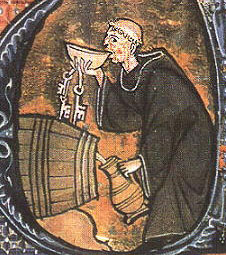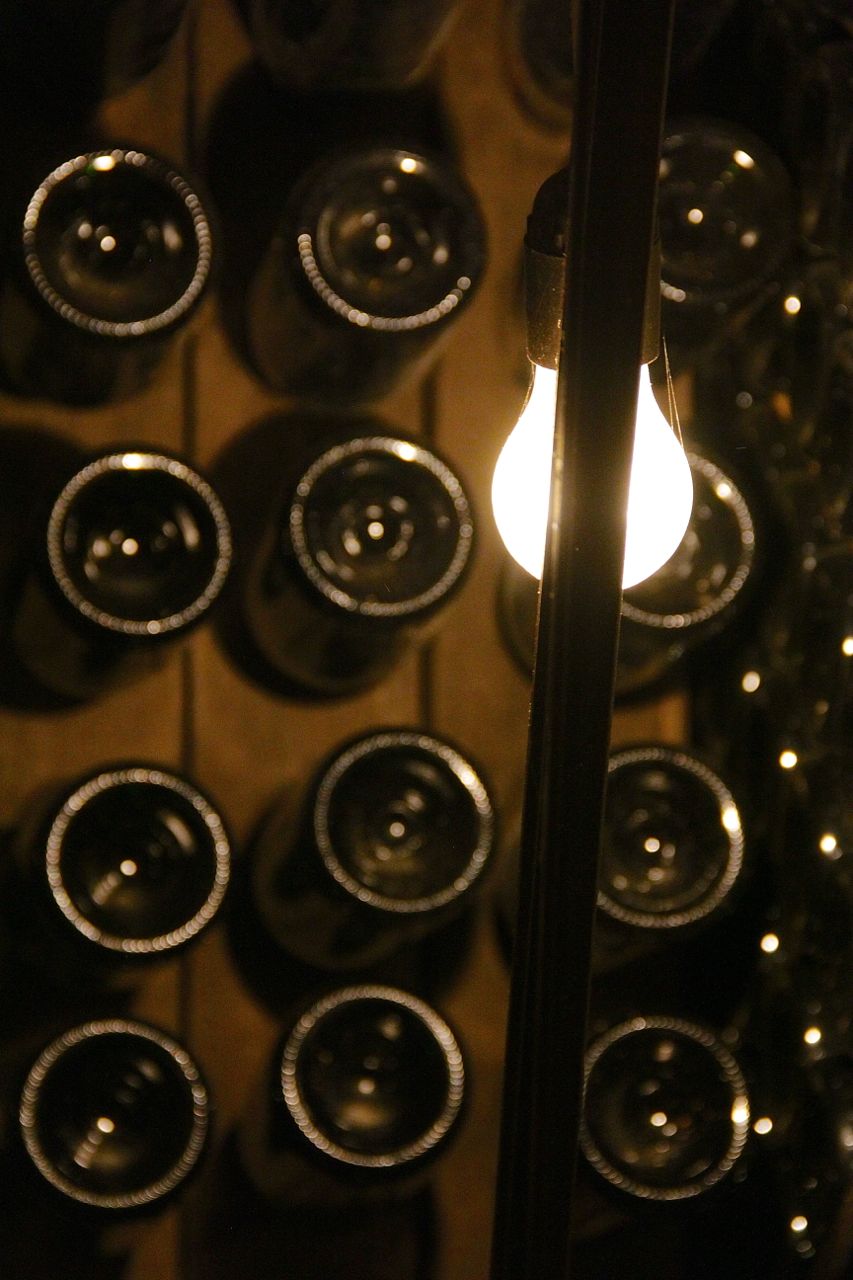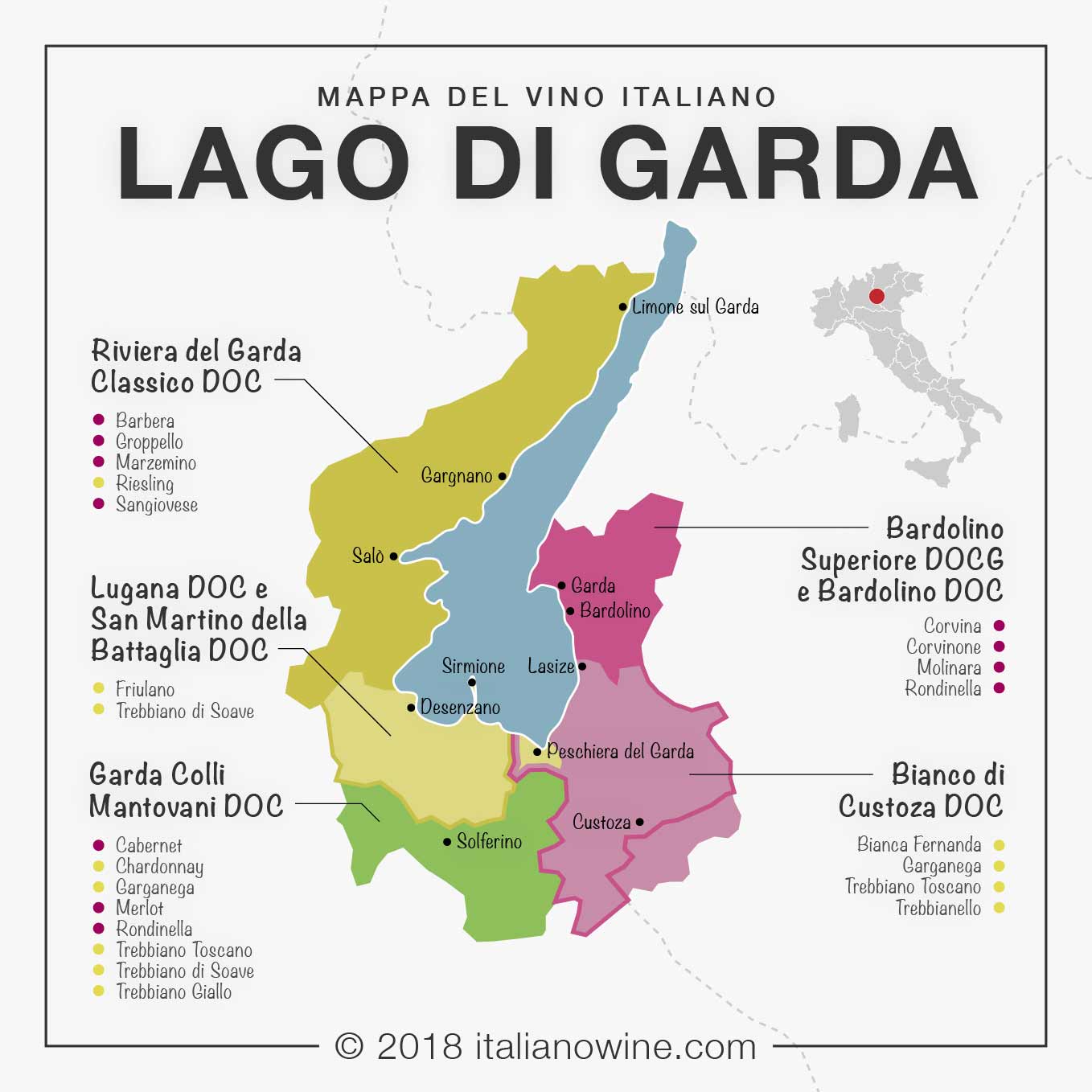Winemaking from Past to Present
The intricate harmony of the favourable geological, geomorphological, pedological and weather conditions of the moraine hills of the Garda lake region results in an environment that is particularly well suited to wine production. Notwithstanding the natural advantages of the terrain, however, the sophisticated culture and traditions of the people who, since ancient times, have lived on the shores of the Lake Garda, must be considered when discussing the excellent wines of the region.
The areas around the lake have been inhabited since prehistoric times, and, as a result of the progressive improvement of wine making techniques and trade between ancient populations, viticulture in the area slowly but surely grew in importance with the passing of time. In this context, the oldest evidence of grape growing in the region is associated with the discovery of grape seeds of Vitis vinifera (subsp. Sylvestris) among the shards of ceramic vases dated to the 5th millennium B.C. in the Neolithic village of Tosina of Monzambano (MN).
Today we know that scores of distinct ethnic and cultural groups inhabited the region in ancient times, including the Ligures, the Euganei, the Insubres, the Sabines, the Etruscan, the Galli Cenomani and the Romans. Thanks to the legacy of that last group, we today have access to extensive historical documentation of the populations of those ancient times.
The viticulture practice on the moraine hills of Garda, therefore, has ancient origins, and a complex history to retrace. The first written record of the refined wines of the territory can be found in the writings of Cato the Censor, around 200 B.C. He referred to a local wine using the term “reticum”, which was produced on the slopes of a territory belonging to the Rhaetian people, a population of Etruscan origin. The Garda Lake, situated on a historically important trade route connecting the cities of Brescia and Verona, has long been a flourishing and vibrant region. For this reason, the vinum Raeticum produced here, which was first referred to by Cato, progressively grew in notoriety, filling even the glasses of the great Roman Emperors. Legend has it that Julius Caesar himself enjoyed drinking the white vinum Raeticum produced by the poet Valerius Catullus in the region. The emperor Augustus was also famously in love with this wine, and records recount that “even if he usually drinks moderately during the day, his custom was to drink it before lunch”. Given this wine’s prestigious admirers, it is no coincidence that many classical authors, including Pliny the Elder, Virgil, Suetonius, Strabo, Martial, Celsius and Cassiodorus, refer to the vinum Raeticum as one of the finest wines of Italian peninsula.
More recently, in the first centuries of the Early Middle Ages, wine production dropped, and the art of winemaking persisted only thanks to the work of Christian monks, who needed wine for their Eucharistic rituals. During the High Middle Ages, the trend was reversed. In fact, this period witnessed a crucial qualitative leap in the wine production process thanks to the development of the fundamentals of what is now modern oenology. Here we begin to see the selection of vine varieties, the separate fermentation of musts, and the use of bag filters. In the modern age, the art of winemaking continued to grow until a period of crisis between 1858 and 1862 that resulted from the introduction of the pest phylloxera (Dektulosphaira vitifoliae) from North America. This insect decimated almost all European vineyards, and the plague could be overcome only by using hybrids of American vines as rootstocks.
A significant intensification of winemaking activity occurred after the Second World War and in the last decades of the twentieth century, and was associated with the introduction of controlled wine denominations (DOC and DOCG) and analogue certifications (for example IGT). Today, the moraine hills of the Garda Lake enjoy seven DOC classifications, and the Cantina Gozzi boasts the production of the Garda Colli Mantovani DOC and Garda DOC wines.



